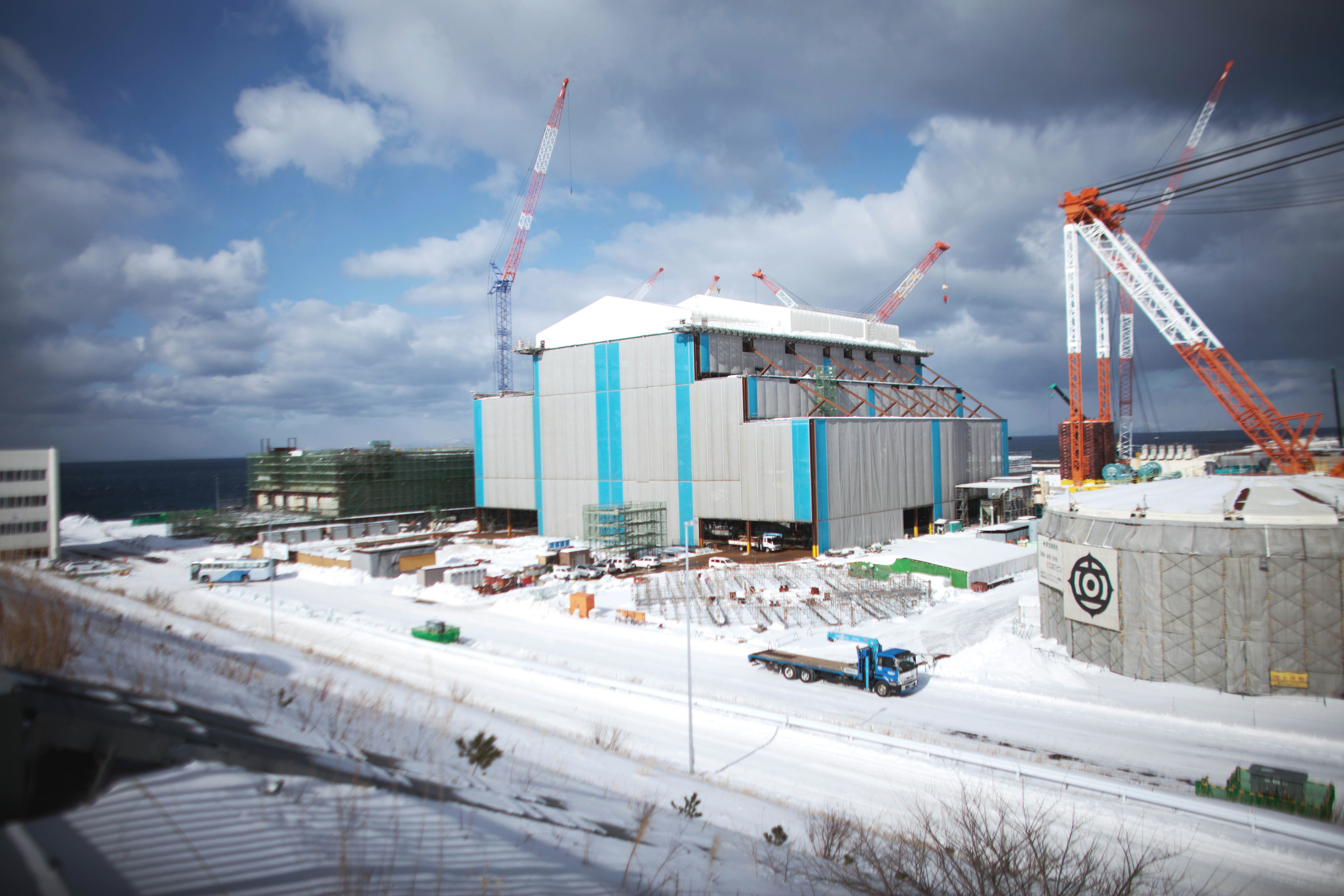At the remote northwestern tip of a snowy peninsula, beyond a small road of fishing shacks and empty one-story homes, 600 construction workers and engineers are building a brand-new nuclear plant for a country still recovering from the most severe atomic disaster since Chernobyl.
The main reactor building is already at its full height, though draped in heavy fabric to protect it from the wind and freezing temperatures. A 152-meter crane swivels overhead. A completed power line stretches along a nearby ridge, where it might one day carry electricity down the peninsula and back toward the interior of Honshu — a place still fiercely divided over the long-term role of nuclear power.
In the aftermath of March 2011 meltdowns in Fukushima that contaminated over 1,800 sq. km with radiation and forced 150,000 to flee their homes, most never to return, utilities have halted nearly all nuclear-related projects. The disaster sparked a global debate about nuclear power, but it was especially fierce in Japan, where all 50 operable reactors were taken offline and work was halted on three new plants where building had been under way.



